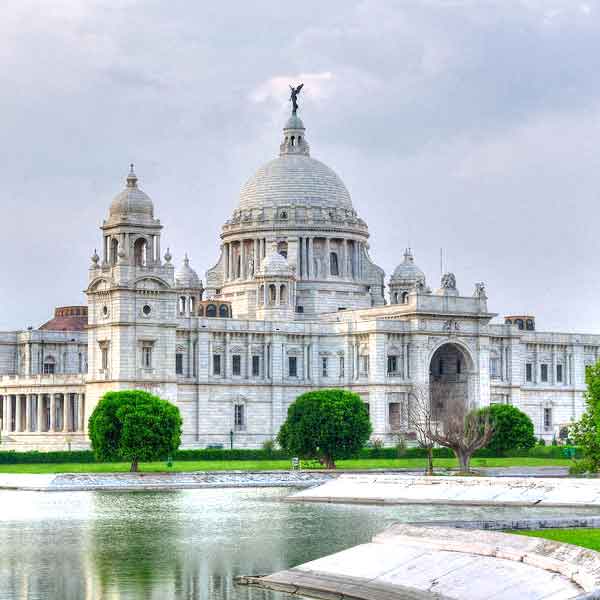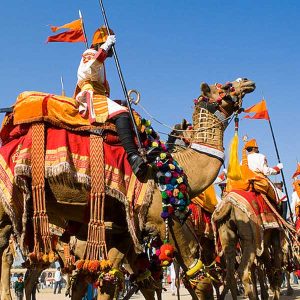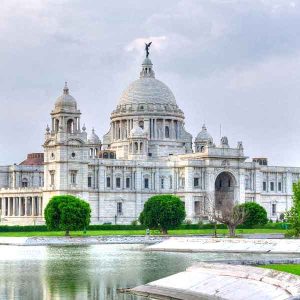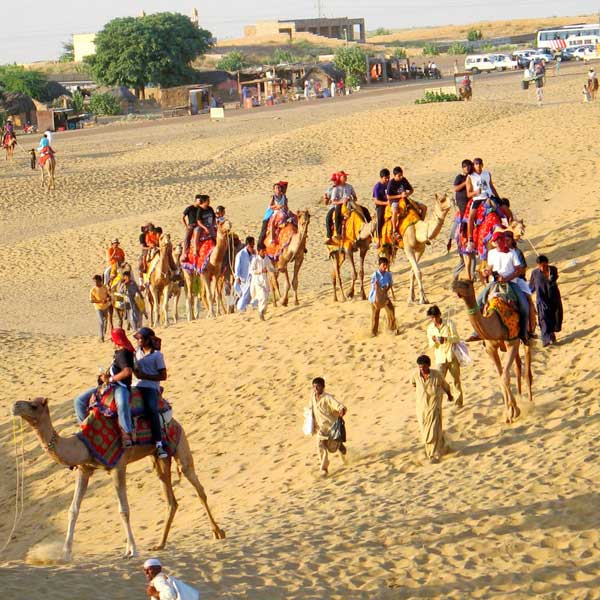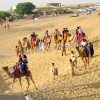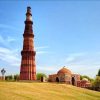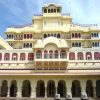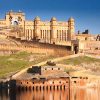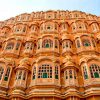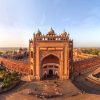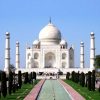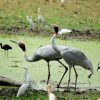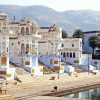Day 01 – Nov 08, 2013: Arrive Delhi.
You are met and assisted upon arrival in Delhi and transferred to the Imperial Hotel in the heart of the city.
Delhi, India’s capital and political hub is an ancient city that has something for everyone. Settled seven times over the centuries, this city has grown in a way that reflects its past, while retaining its cosmopolitan flavour. Delhi is India’s showcase, be it architecture, religion, shopping, culture – everything is available here – waiting to be discovered. Overnight at the hotel in Delhi.
Day 02 – Nov 09, 2013: Delhi.
The morning is at leisure. In the afternoon, proceed for sightseeing of New Delhi. Visit the 12th century Qutab Minar, gracefully hand?carved for its entire height of 234 ft. Visit the mausoleum of emperor Humayun, a forerunner of the Mughal style of architecture and the imposing modern Lakshminarayan temple. Drive past the India Gate (World War I memorial), The President’s Residence, Parliament House and the Secretariat buildings, an interesting blend of the Victorian and 20th century architecture. Overnight at Imperial Hotel in Delhi.
Day 03 – Nov 10, 2013: Delhi to Agra.
After breakfast, drive to Agra. (Approximately a four hour drive). On arrival, check into Oberoi Amar Vilas.
Agra is renowned the world over due to the fabulous Taj Mahal and is situated on the right bank of the river Yamuna. Agra is a city with a glorious past and has the distinction of being the capital of Mughal dynasty.
In the afternoon, visit the Agra Fort. This fort was started by Emperor Akbar in 1565. The high red stone monument stretches for around 1½ miles. The palace is a notable for its smooth blending of Hindu and central Asian architectural styles. See the Diwan-i-Am (hall of public audiences), Diwan-i-Khas (hall of private audiences), the Khas Palace, the Sheesh Mahal (palace of mirrors), the Shah Jahani Mahal (Shahjahan’s Palace), Jahangiri Mahal (Jahangir’s Palace) and the Akbari Mahal (Akbar’s palace) inside the fort.
This evening visit the Taj Mahal, which is the seventh wonder of world built by Shahjahan as a memorial to his wife Mumtaz Mahal by the banks of river Yamuna. After her untimely death, Shahjahan had her mortal remains buried in this mausoleum. After his own demise he was placed to rest next to his beloved queen in the same mausoleum. The Taj has been called the most extravagant monument ever built for the sake of love. The great monument took almost 22 years to build and was completed in 1653. Around 20,000 workers from all over the country and central Asia were recruited to translate this dream into a reality. Overnight at Oberoi Amar Vilas in Agra.
Day 04 – Nov 11, 2013: Agra to Bharatpur via Fatehpur Sikri.
Early this morning visit the Taj Mahal again to witness it in a different light.
Later return to hotel for breakfast. Afterwards, continue your drive to Bharatpur en-route visiting “Fatehpur Sikri,” situated around 40 km from Agra. It was built by Emperor Akbar in 1569 and abandoned after 15 years due to scarcity of water. This was the capital of the Mughal emperor Akbar between 1570 and 1586. Fatehpur Sikri’s sprawling structure is made of red sandstone and combines both Hindu and Muslim architecture. The main entrance to this walled city is through the 175 feet Buland Darwaza. The finest monuments within this area are the Diwan?I?Am, Diwan?i?Khas, Panch Mahal, Jama Masjid and Panch Mahal.
On arrival in Bharatpur, check in at The Bagh hotel.
Bharatpur: The Keoladeo Ghana National Park or, as many people prefer to call it, the Bharatpur Bird Sanctuary lies between two of India?s most historic cities, Agra and Jaipur. This north Indian sanctuary is situated in the country?s northwestern state of Rajasthan, about 190 km from the national capital of Delhi. The name ‘Keoladeo’ is derived from the name of an ancient Hindu temple devoted to Lord Shiva in the sanctuary’s central zone while the Hindi term ‘Ghana’ implies dense, thick areas of forest cover. Overnight at The Bagh.
Day 05 – Nov 12, 2013: Bharatpur to Jaipur.
In the early morning visit the sanctuary. This spectacular bird sanctuary is historical in its own way. The Maharaja of Bharatpur is credited for its creation in 1890, though conservation was the last thing on his mind. He got a large area enclosed with embankments and further divided it with earthen dams called ‘bunds’ creating a large number of marshes and lakes. Thus, Bharatpur is mainly an artificial creation. The government banned the indiscriminate shooting of birds in 1965. Conservation efforts originally started by Dr. Salim Ali received a further impetus when the area was deemed a national park in March 1982. In 1985, Bharatpur was accepted as a World Heritage Site.
Bharatpur hosts a variety of bird species from across the globe. Close to 380 species of birds are found in this 29 sq km stretch, approximately 10 sq km of which comprises of marshes and bogs. The rest of the area comprises of scrublands, grasslands and more than 44,000 trees that are used for nesting by birds each year. This rather intriguing blend of marshes, woodland and flora found here represents and, at the same time, substantiates the density and diversity of the region’s forest cover.
Return to the hotel for breakfast and then continue your drive to Jaipur.
Built by Sawai Jai Singh, the city of Jaipur is amongst the first of India’s planned cities. The ancient heart of the Pink City still beats in its fairy tale palaces; rugged fortresses perched on barren hills and broad avenues. Jaipur has a timeless appeal in its colorful bazaars that delights for its Rajasthan handlooms and trinkets. Beautifully laid out gardens and parks, attractive monuments and marvelous heritage hotels, once the residence of Maharajas, are worth admiration that makes a trip to the pink city a memorable one.
On arrival in Jaipur, check in at the Oberoi Rajvilas. The evening is free at your leisure.
Day 06 – Nov 13, 2013: Jaipur.
After breakfast proceed for sightseeing of Jaipur. Visit the Amber Fort which is a classic, romantic Rajasthani Fort Palace, with its rugged, time?ravaged walls and fascinating palaces inside. Visit the enchanting palaces and gardens inside the fort palace to complete your tour. On your way back, stop at Hawa Mahal ‘Palace of Winds’ for a brief stop for photographs and as it is in the heart of Jaipur’s shopping district, to buy souvenirs.
After lunch visit the City Palace, the former residence of the royal family, a part of which is converted into a museum. Built in the style of a fortified campus, the palace covers almost one?seventh in area of the old city. One of the major attractions in the museum is the Armoury Museum housing an impressive array of weaponry. Later visit the Jantar Mantar, which is the largest stone and marble crafted observatory in the world. The observatory has 17 large instruments, many of them still in working condition. Overnight at Oberoi Rajvilas.
Day 07 – Nov 14, 2013: Jaipur to Pushkar.
This morning explore Jaipur at your own pace. After lunch drive to Pushkar (Approx 3 hrs transfer).
On the edge of the desert lies the tiny tranquil town of Pushkar along the bank of the picturesque Pushkar Lake. This important Hindu pilgrimage has the only temple of Lord Brahma (“The Creator” in the Hindu Trinity of Gods) in the country and one of the few in the world.
On arrival check in to the Orchard Camp – luxury tented accommodation at Pushkar for 4 night stay. The remainder of the day is at leisure. You can roam around the fair grounds and get a feel of this amazing fair, before returning to camp for a lavish dinner and entertainment. Overnight at The Orchard.
Day 08 – Nov 15, 2013: Pushkar Camel Fair.
After lunch and time to freshen up we head over to the frenzy of activity and riot of colour that is associated Pushkar – possibly the world’s largest camel fair. Attracting some 300,000 visitors, 40,000 camel, cattle and horses the fair draws sightseers, pilgrims, nomads, breeders, herdsmen, farmers and traders with their accompanying family, livestock and wares from all over the state of Rajasthan. Pushkar is an authentic cultural spectacle that’s totally unique and promises to be good fun.
Day 09 – Nov 16, 2013: Pushkar Camel Fair.
Today offers a glimpse at the serious business of livestock trading and the judging of the best bovine and camelids in each category. There are also more light hearted activities on offer such as the camel running races, tug of war, awards for the best dressed camel and a beauty pageant. Take a look in at the longest moustache competition or keep score at the cricket match between the local Pushkar club and a random assortment of tourists. There are also vibrant folk music and dances, magic shows and various other traditional entertainment and competitions as well as hundreds of authentic stalls to explore, packed with jewellery and textiles from the surrounding areas.
This evening can be spent watching the various entertainment offered at our camp, outdoors and under a blanket of stars.
Day 10 – Nov 17, 2013: Pushkar Camel Fair.
Today marks the start of the Kartik Poornima, a Hindu holy day celebrated on the full moon or the fifteenth lunar day in the month of Kartik. According to the Hindu scriptures the lake relates to Brahma, the god of all creation and is one of the five most holy Hindu pilgrimage sites in India. The Brahma temple here is the most important temple in Pushkar, and is in fact the only Brahma temple in the whole of the country.
On this day of celebration countless pilgrims swathed in colourful fabric converge for a holy dip in the sacred lake before the morning sun has cast its first rays on the earth. Surrounded by 52 bathing ghats (a series of steps leading to the lake), throngs of devotees line the water’s edge praying to the deities before washing away the sins of a lifetime.
After all sin has been absolved, the atmosphere is electric and the carnival, music, dancers, magicians, acrobats, snake charming, horse and camel racing continues. If all the excitement becomes too much and you’re in need a breath of fresh air remember you can always take stroll and explore any one of the 500 Hindu temples surrounding the lake and the local area.
This fascinating spectacle of cattle trading, religious worship, celebration and festivity at Pushkar during this time of year is globally famous. Your baggage allowance may not allow you to take home a camel, but you’re sure to find something truly unique and authentic here at the annual fair.
Day 11 – Nov 18, 2013: Pushkar to Delhi via Ajmer.
This morning offers free time before visiting the town of Ajmer Sherif. The most notable site is the resting place of the Sufi seer, Khwaja Muin-ud-din Chisti who died here in 1236 after six days of fasting and praying. Possibly the most important Muslim shrine in India, fervent pilgrims patronize the shrine as did many of the Mughal rulers including that of Emperor Akbar.
After visiting the Dargah, we head back to Delhi. On arrival, transfer to the Imperial Hotel for overnight stay.
Day 12 – Nov 19, 2013: Delhi. Depart Delhi.
Today, the day is free to do some shopping at Connaught Place and Janpath (walking distance from the hotel). Later, in time transfer to the airport to board your flight to onward destination.
Date and price to suit individual arrangements based on 2 people sharing. Breakfast included. Private air-conditioned car and driver with English speaking guides for sightseeing.

